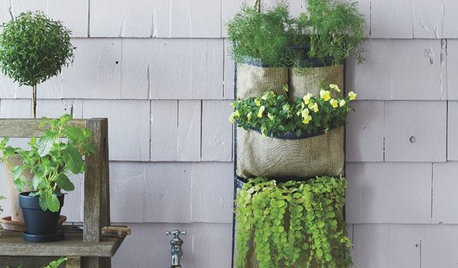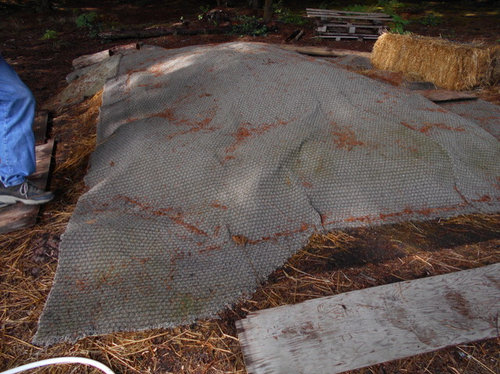Heating outdoor wormbeds
mendopete
9 years ago
Related Stories

GARDENING AND LANDSCAPINGBlow Past the Heat With an Outdoor Ceiling Fan
Drop some degrees on your porch or patio while boosting its style, with an energy-efficient ceiling fan
Full Story
GARDENING AND LANDSCAPING3 Ways to Bring the Heat to Outdoor Living Spaces
Here’s what to know about surviving winter’s bite with an outdoor fireplace, fire pit or heat lamp
Full Story
GARDENING AND LANDSCAPINGChill Out: 10 Cool Ways to Beat the Heat Outdoors
Step away from the A/C's artificial blast — and treat yourself to these more natural cool-down methods in the great outdoors
Full Story
PATIOSA Modern Backyard Trumps the Texas Heat
New shaded areas offer a respite in an outdoor Houston living room, while a fire pit re-creates fond memories
Full Story
PRODUCT PICKSGuest Picks: How Do You Spell Urban Heat Relief?
Turn even a small balcony into a summer oasis with retreat-conjuring plants, furniture and accessories
Full Story
MORE ROOMSBeat the Heat: Escape to the Basement
When It's Too Hot or Rainy, Bring the Party Downstairs
Full Story
FLOORSFloors Warm Up to Radiant Heat
Toasty toes and money saved are just two benefits of radiant heat under your concrete, wood or tile floors
Full Story
BATHROOM DESIGNWarm Up Your Bathroom With Heated Floors
If your bathroom floor is leaving you cold, try warming up to an electric heating system
Full Story
GREEN BUILDINGInsulation Basics: Heat, R-Value and the Building Envelope
Learn how heat moves through a home and the materials that can stop it, to make sure your insulation is as effective as you think
Full Story
HOUSEKEEPING5 Steps to Improve Your Heating System Now
Increase your heater's efficiency and safety for lower energy bills and greater peace of mind this winter
Full Story






equinoxequinox
nexev - Zone 8b
Related Professionals
Edmond Landscape Architects & Landscape Designers · Forest Park Landscape Architects & Landscape Designers · Stoughton Landscape Contractors · Battle Ground Landscape Contractors · Brockton Landscape Contractors · Burlington Landscape Contractors · Cudahy Landscape Contractors · Ellicott City Landscape Contractors · Little Ferry Landscape Contractors · Mastic Beach Landscape Contractors · Bensenville Landscape Contractors · Gary General Contractors · Haysville General Contractors · Rolling Hills Estates General Contractors · Williston General Contractorsklem1
barbararose21101
armoured
renais1
klem1
armoured
MrBackyard
nexev - Zone 8b
mendopeteOriginal Author
mendopeteOriginal Author
mendopeteOriginal Author
equinoxequinox
mendopeteOriginal Author
11otis
FrancoiseFromAix
armoured
mendopeteOriginal Author
FrancoiseFromAix
nexev - Zone 8b
harry757
mendopeteOriginal Author
nexev - Zone 8b
OrganicAdam
mendopeteOriginal Author
mendopeteOriginal Author
equinoxequinox
nexev - Zone 8b
mendopeteOriginal Author
nexev - Zone 8b
barbararose21101
FrancoiseFromAix
FrancoiseFromAix
mendopeteOriginal Author
nexev - Zone 8b
pskvorc
pskvorc
chuckiebtoo
mendopeteOriginal Author
chuckiebtoo
nexev - Zone 8b
FrancoiseFromAix
mendopeteOriginal Author
mendopeteOriginal Author
FrancoiseFromAix
nexev - Zone 8b
rayzone7
FrancoiseFromAix
rayzone7